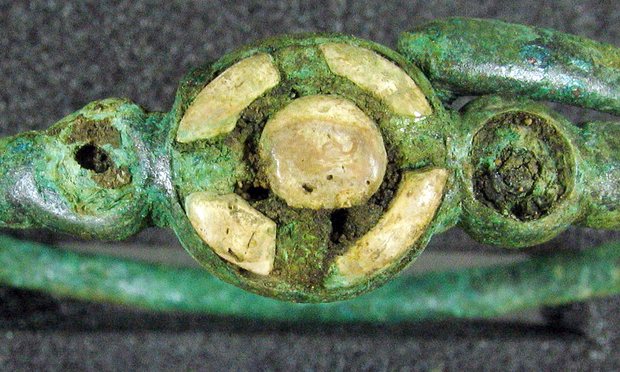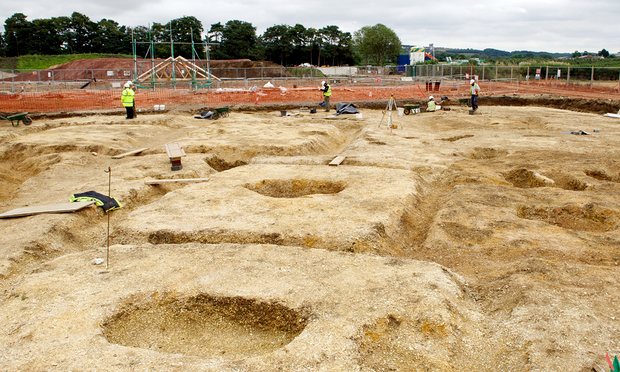Construction workers in Pocklington, East Yorkshire were recently working on building a housing development; little did they know that their work would be halted by the discovery a 2,500-year-old settlement.
To archaeologists and other experts, this find is believed to be of international significance; it allows researchers to study one of the largest Iron Age settlements that have been found in the last 35 years. The site actually includes more than 75 square barrows that contain nearly 75 skeletons from the Arras culture. These people lived in that particular region in the Middle Iron Age, dating as far back as 800 BC.
One of the archaeologists at the site said that he and his team of archaeologists have uncovered items such as a sword, a shield, and nearly 10 spears. Other items found in the area include over 360 amber and glass beads, brooches, and ancient pots.
He added that this find is quite fascinating, and further analysis on the skeletons and items will be done. The archaeologists and researchers working on the project hope to find out how those people had died, as well as what stresses their bodies had endured during their lifespans, and whether or not any of them are related. However, those studies are not the main focus for the researchers; the researchers are looking to see if the people found were indigenous or migrants from the continent.
The spokesmen added that the majority of those barrows excavated reveal that the bodies had been well-preserved. Only a few of the remains had been damaged by the soil conditions and plowing. Just by looking at the remains the researchers were able to tell that there was a mixture of sexes in the group – the remains had included men, women, and children.
The managing director at MAP Archaeological Practice, Paula Ware, said that to date this site is one of the largest barrows of Arras culture in the east of Yorkshire. She added that, thankfully, all of these sites found in the area allow researchers and archaeologists to strengthen their knowledge and studies.
She also explained that she and the researchers hope to shed some light on the ritual styles of Iron Age burial as well as how the shields and swords buried with the body were significant during that time. Were those people who were buried with their weapons higher members of society? By looking at these questions they hope to get a better understanding of the culture and the top members of the society at that time.

Ware said that this is hugely important and is a great example of what could be hidden in those cities and what can ultimately be revealed. The beautiful thing is that the construction workers and builders are working hand-in-hand with the archaeologists, proving that both groups can work well together and help each other out where it is needed most. The two groups might reveal hidden history and will have the honor of being the first ones to witness it.
David Wilson Homes had actually found the settlement at the Pavilion Square development after the company began their work in September of 2014. They are now finally able to announce it to the public. They will talk about the site, showcase what they found, and explain the studies they have done so far.
The development director at David Wilson Homes, Peter Morris, had said that the findings are quite significant. This find could actually help shape the locals’ and people’s understanding of the Arras culture as well as the Iron Age in its entirety. He added that the groups are still at the very first stages of reviewing and studying their findings. However, they do understand that a find such as this is quite rare.
